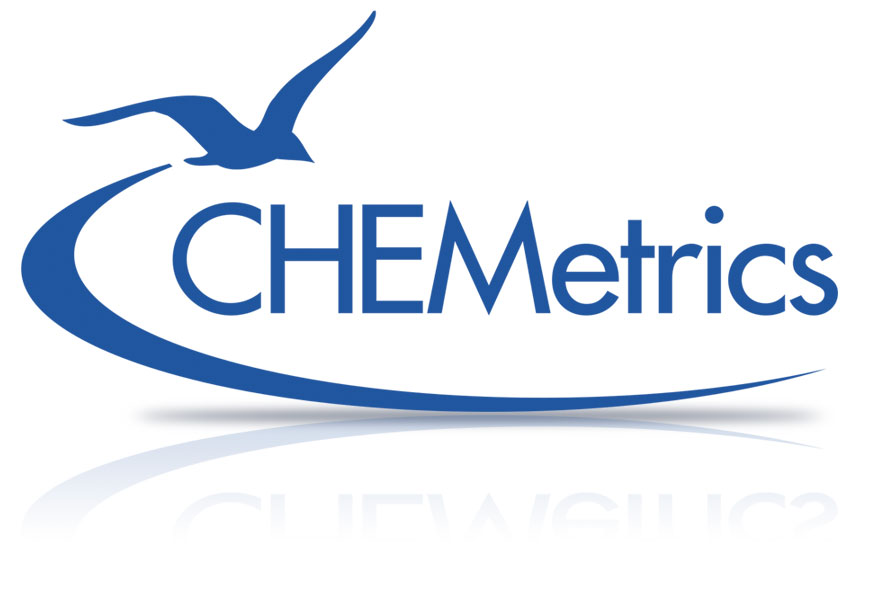Chlorine Test Kits

What is Chlorine?
Chlorine is a halogen and strong oxidizing agent that is used by many industries as a disinfectant in water. Total chlorine is the sum of free chlorine (hypochlorite ion and hypochlorous acid) and chloramines (also known as combined chlorine) which are formed by the reaction of free chlorine with ammonia. Free chlorine is routinely added to water as a disinfectant (chlorination). Disinfection with monochloramine (chloramination) is an alternative or a supplement to chlorination to maintain long-lived residuals in water distribution pipelines. Chlorine was one of the first chemicals ever used in water treatment and has been in use since the 19th century to treat drinking water. Today, it is also used to treat municipal wastewater, swimming pools and spas.
Why Test for Chlorine?
While both free and combined chlorine act as disinfectants, free chlorine has stronger disinfecting properties. It is therefore advantageous to distinguish between free and combined chlorine in treated waters. In addition, due to the formation of harmful disinfectant byproducts (DPB) it is imperative to closely monitor the residual concentration of chlorine. The Maximum Residual Disinfectant Level for chlorine in drinking water is 4 mg/L. Total water chlorination test kits can also be used to determine the total residual oxidizer (TRO) concentration of seawater.
About Our Test Kits
CHEMetrics offers a full line of chlorine in water test kits that utilize our self-filling ampoule technology that reduces the user’s exposure to chemicals.
Our CHEMets® visual chlorination test kits use a color comparator for analysis. Kits employing the DPD chemistry are offered for low and high range determination of free & total chlorine and high range determination of hypochlorite (free chlorine) only. Our ULR CHEMets® employing the DDPD chemistry are available for ultra low range determination of free & total chlorine.
Our Vacu-vials® instrumental test kits employ the DPD chemistry and are accepted by the USEPA for wastewater and drinking water analysis. These kits require the use of a CHEMetrics direct-readout photometer or spectrophotometer capable of accepting a 13-mm diameter round cell.
Click on a catalog number in the tables below for more information or to purchase a chlorination test kit.
Visual Kits
| Range | MDL | Method | Kit Catalog No. | Refill Catalog No. |
|---|---|---|---|---|
| 0-0.20 ppm | 0.04 ppm | DDPD (free & total) | K-2511 | R-2511 |
| 0-1 & 0-5 ppm | 0.05 ppm | DPD (free & total) | K-2504 | R-2500 |
| 0-25 & 0-125 ppm | 2.5 ppm | DPD (free & total) | K-2504D | R-2500 |
| 0-50 & 0-250 ppm | 5 ppm | DPD (free & total) | K-2504A | R-2500 |
| 0-100 & 0-500 ppm | 10 ppm | DPD (free & total) | K-2504B | R-2500 |
| 0-400 & 0-2000 ppm | 40 ppm | DPD (free & total) | K-2504C | R-2500 |
| 0-1.55% as NaOCl | 0.3% | DPD (hypochlorite) | K-5808 | R-2500 |
| 0-12.5% as NaOCl | 2.5% | DPD (hypochlorite) | K-5816 | R-2500 |
Instrumental Kits
| Range | Method | Kit Catalog No. |
|---|---|---|
| 0-5.00 ppm | DPD (free & total)* | K-2513 |
| 0-5.00 ppm | DPD (free & total) | I-2001 |
» USEPA Acceptance Letter*
Methods
References: USEPA Methods for Chemical Analysis of Water and Wastes, Method 330.5 (1983). APHA Standard Methods, 23rd ed., Method 4500-Cl G- 2000.In the USEPA-accepted DPD methodology, free chlorine reacts with DPD to form a pink product. When ammonia or amines are present, some of the chlorine may exist as combined chlorine. Combined chlorine will not interfere with the free chlorine results, provided the readings are taken at one minute. To determine total chlorine (the sum of free and combined), use the A-2500 Activator Solution (potassium iodide) supplied in the kit. Results are expressed as ppm (mg/L) Cl2.The DPD method is also applicable to the direct determination of hypochlorite concentrations in various cleaning preparations and disinfectants prior to their dilution. DPD reacts with hypochlorite ions to form a pink color. Results are expressed as percent (%) NaOCl.
Reference: Developed by CHEMetrics, LLCThe DDPD™ method is derived from the DPD method. Chlorine water test kits that employ this chemistry are well suited for use where biocides and chromate corrosion inhibitors are used simultaneously. DDPD reacts with free chlorine to form a purple product. When ammonia or amines are present in the sample, some of the chlorine may exist as combined chlorine. To determine total chlorine (the sum of free and combined), use the A-2500 Activator Solution (potassium iodide) that is supplied in the kit. Results are expressed as ppm (mg/L) Cl2.


